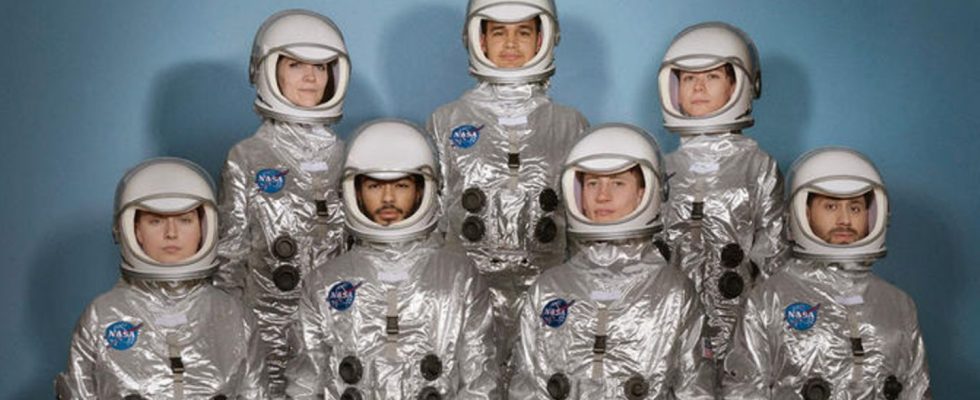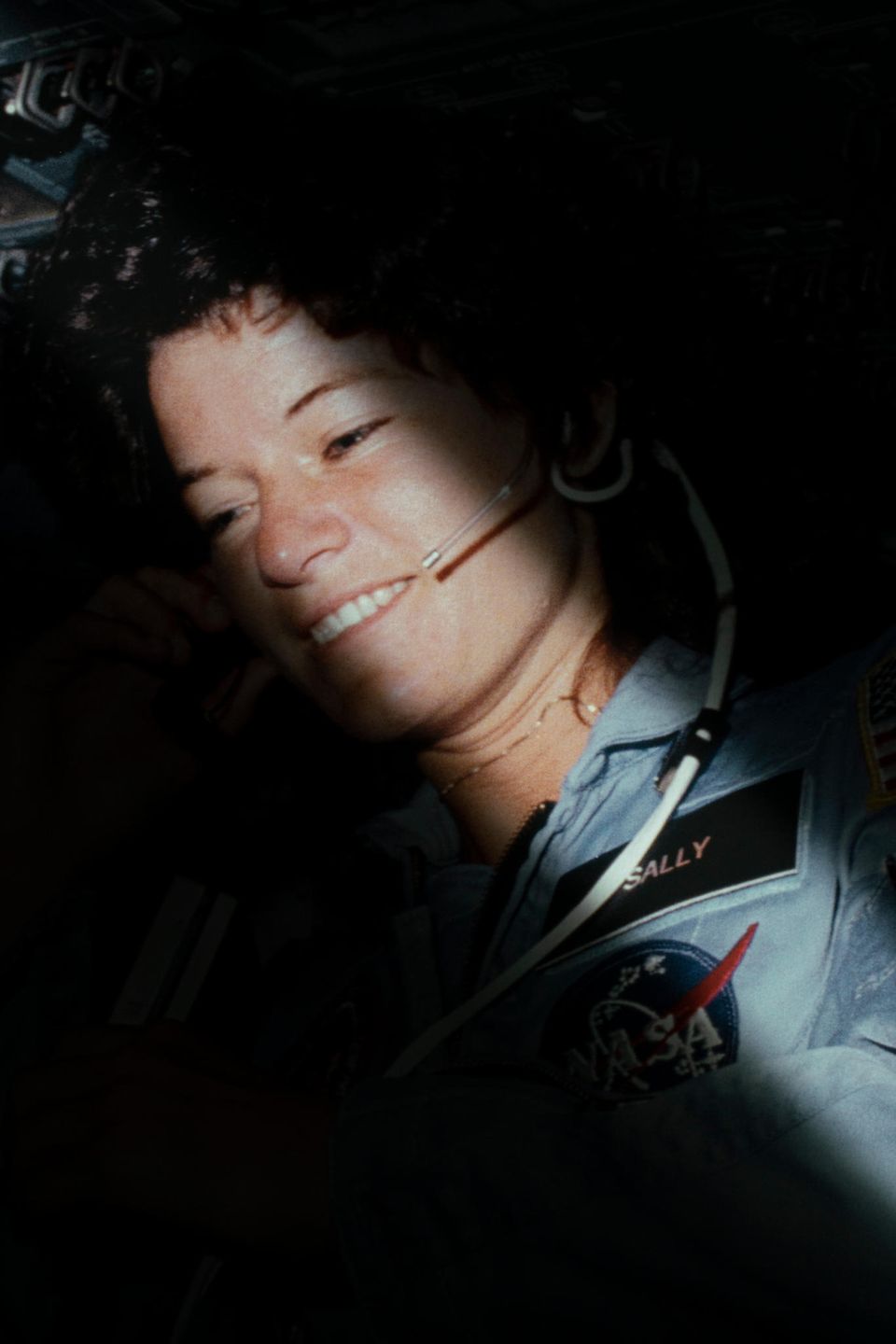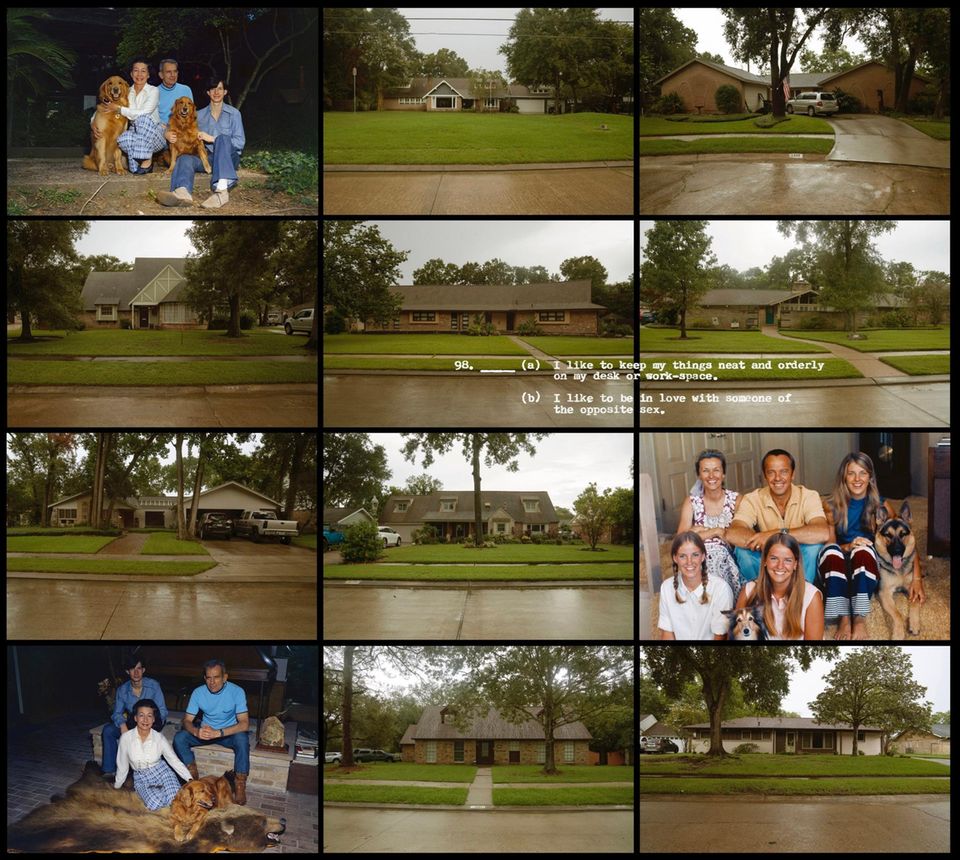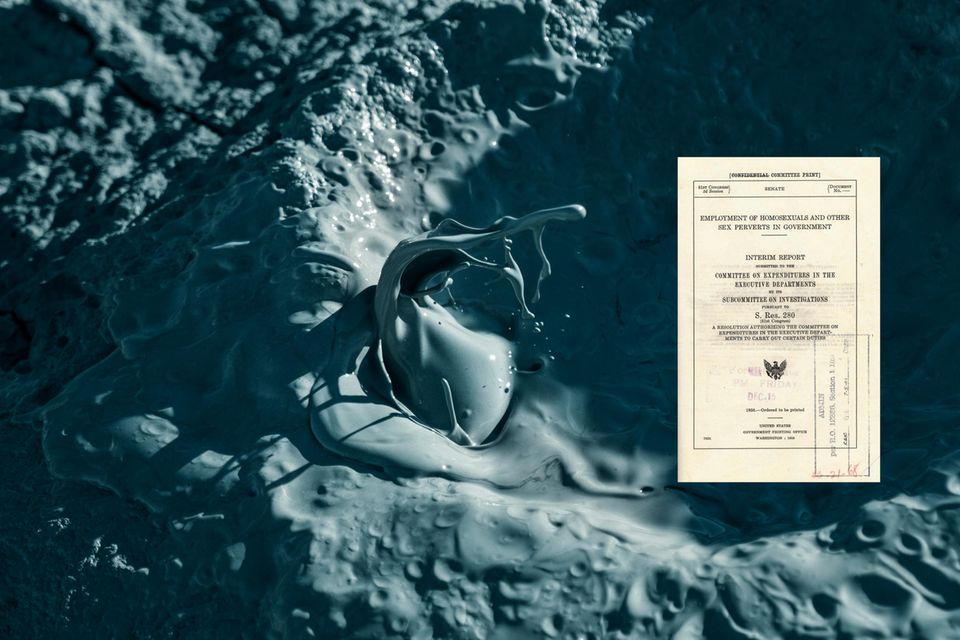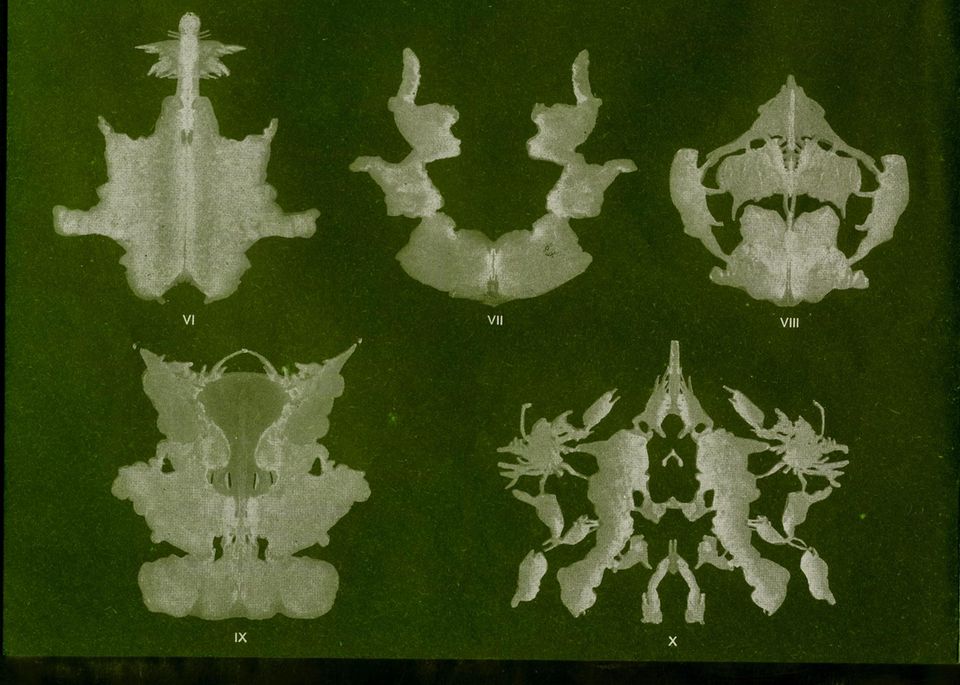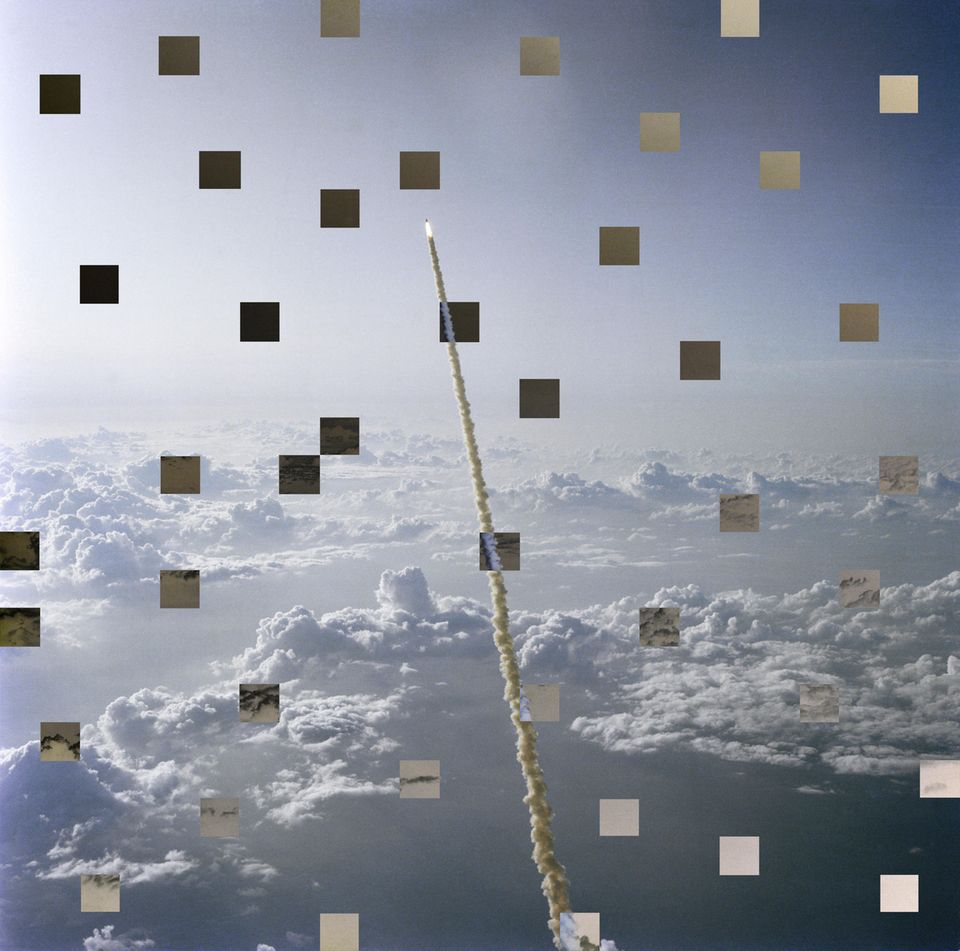World Press Photo Award
Sexual discrimination in space – NASA’s inglorious chapter
Collage: Original image of the seven astronauts of the Mercury Project combined with queer people from the Out Astronaut project, a privately funded organization that offers those interested two years of basic training to become astronauts
© Mackenzie Calle
For decades, NASA excluded queer people from its programs. The photographer Mackenzie Calle is now creating a monument to them with her award-winning project “The Gay Space Agency”.
At school she was particularly interested in mathematics and space travel. The American Mackenzie Calle later studied photography and now works as a photo reporter. By chance she came across a newspaper article about the astrophysicist Sally Ride. In 1983, she was the first American woman to fly into space on a space shuttle. It was only after her death in 2012 that it was revealed that she had lived with a woman, children’s author Tam O’Shaughnessy, for 27 years. “Funnily enough, it wasn’t a big deal in the media,” says Calle in an interview with star.
From the photo project “The Gay Space Agency” by US photographer Mackenzie Calle: In 1983, Sally Ride became the first American woman to fly into space. It was only after her death that it was revealed that she had lived with a woman for 27 years
© Mackenzie Calle
The photographer, who lives in New York, wanted to find out more about it and began researching: “I am queer myself and deal with the topic of sexual orientation, especially in a historical context. To her surprise, she discovered what a major role the topic plays in space travel The first seven astronauts of the Mercury project in the late 1950s were all experienced fighter pilots and heterosexual men.
Collage: The houses and families of the NASA astronauts corresponded to the typical image of the American model family. One of the selection questions of the psychological test is displayed
© Mackenzie Calle
Hundreds of psychological questions
“Until 1973, gay men were banned from working in a federal agency,” says Calle. So NASA also did everything it could to send only heterosexual men into space. “She had a very specific vision of who should be an astronaut: She corresponded to the prevailing image of the traditional American man providing for his family at the time.” Strong, but not too macho, is the idea.
Photo collage with the cover page of a study commissioned by the US Senate on “homosexuals and other perverts in the US civil service”
© Mackenzie Calle
“The candidates had to undergo numerous psychological tests,” says Calle. This included, among other things, the famous Rorschach text. The men were asked to recognize female body shapes in abstract inkblot pictures. In addition, the prospective astronauts had to answer hundreds of psychological questions. The basis for this was the Edwards Personal Preference Schedule (EPPS) developed by psychology professor Allen Edwards. It comprised 15 questions from 15 subject areas, each of which had two alternative answer options. One area of question concerned sexual orientation: According to Calle, the men had to say whether they would love and kiss people of the opposite sex.
The astronaut candidates were supposed to recognize female body shapes in the inkblots of a Rorschach test as evidence of their heterosexual orientation
© Mackenzie Calle
Mackenzie Calle won the World Press Photo Award
It wasn’t just men who were checked for their “safety”. Sally Ride would probably never have gone into space if NASA had found out about her love for a woman. From 1982 to 1987, Sally Ride was married to astronaut Steven Hawley. The marriage ended virtually at the same time as her career with the space agency.
The 43 squares in this launch image of the space shuttle on which Sally Ride flew in 1983 symbolize the proportion of queer people in the American population
© Mackenzie Calle
Nasa’s sexual discrimination inspired photographer Mackenzie Calle to undertake a special photo project. The starting point was the question: What if there had been or would be a queer space organization alongside NASA? Under the title “The Gay Space Agency,” she combined historical footage with questions or images from psychological tests or replaced actual astronauts with queer aspirants interested in space travel. With this project she became one of the 24 winners of the World Press Photo Awards 2024.
What is the World Press Photo Contest?
World Press Photo is a non-profit organization from the Netherlands that supports professional press photographers. Since 1955, the World Press Photo Awards have honored the best works of the past year. This year’s 67th edition featured a total of 61,062 entries (still images and multimedia) from 3,851 photographers from 130 countries. The topics range from war scenes to environmental problems to moments from everyday life.
What categories are there?
The four categories are: Photo of the Year, Story of the Year, Long Term Project and Open Format. After the regional juries have made their selection, the global jury decides on the 24 regional winners and from these in turn on the four global winners.
Who is on the jury?
There are a total of six regional juries and one global jury. The regional juries come from Africa, Asia, Australia/Oceania, Europe, North America and South America. They are made up of five experts from the photography and journalism industry from the respective regions. This year, for example, on the European jury there were two photographers from England, a photographer from Russia, the head of photography at “NZZ” from Switzerland and the head of photography at stern as representatives for Germany. The regional juries each propose a shortlist for different categories to the global jury.
What is there to win?
The winners receive prize money of 1000 euros each. The winners, honorable mentions and special jury mentions will be included in the World Press Photo Annual Exhibition and Yearbook, published on the World Press Photo website and invited to the Winners’ Program in Amsterdam. In addition to their regional prizes, the global winners will receive a cash prize of 5,000 euros, a FUJIFILM GFX100 II camera with accessories and an additional non-cash prize. This year, the jury made the extraordinary decision to also include two special honorable mentions related to the war between Israel and Hamas.
Where can the pictures be seen?
The award-winning photographs will be featured in a traveling exhibition in more than 80 cities around the world. The magazines GEO and stern have been presenting the exhibition in Germany for over 25 years. They will be on display in the Altona Museum in September this year.
Calle is pleased about the attention to her concern, but she still sees a lot of work to be done. “To date, NASA has not dealt with this discriminatory practice over decades. There has also been no apology to those affected,” regrets Calle. Today, the space agency no longer conducts sexual orientation tests. Yet in the space industry, only very few people who identify as part of the LGBTQ community come out, as a 2022 study of NASA astronauts showed. “Like Sally Ride, they fear disadvantages for their careers or even being excluded from some programs,” says Calle. There is only one thing that should decide whether someone works in a (space) project: whether he or she is qualified and passionate about it.

